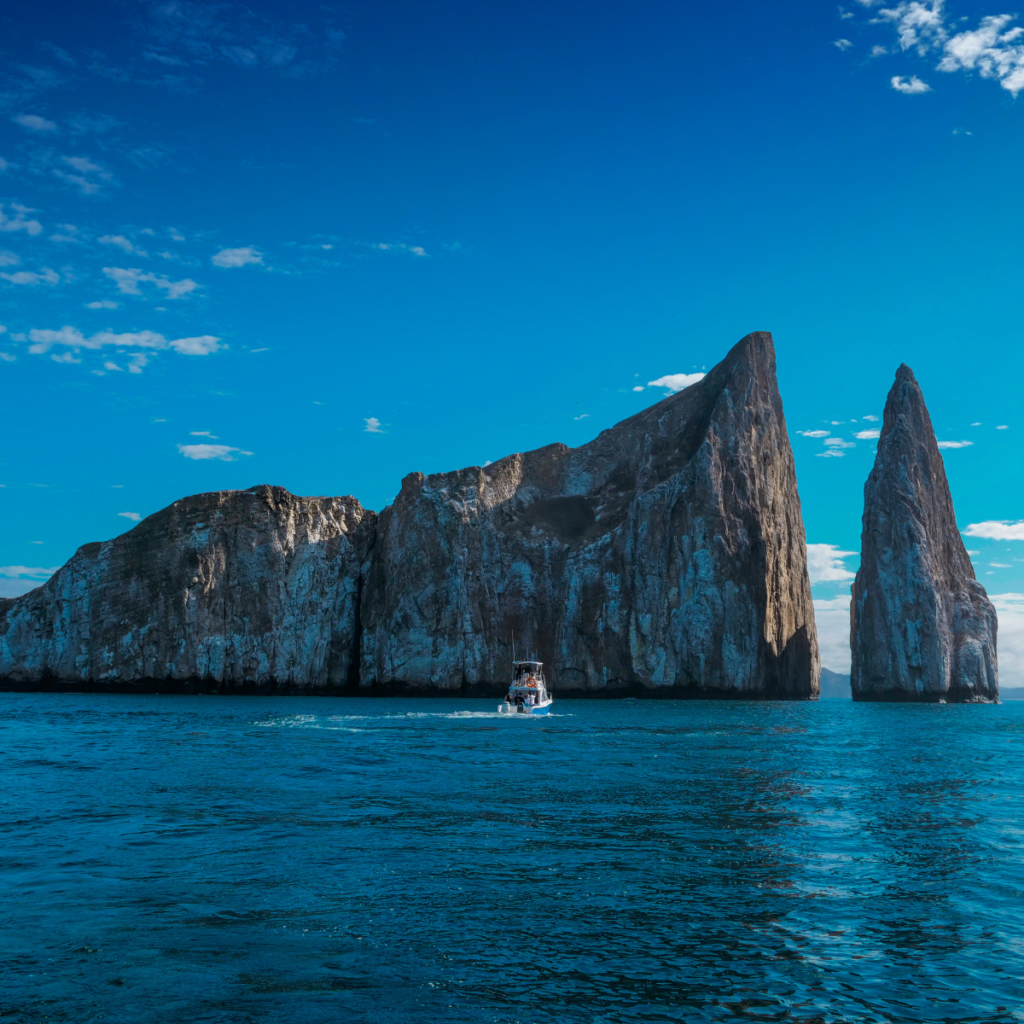

Galapagos hidden gem: Our enchanted islands keep in its heart a huge diversity of natural life, only the ones who have been there know how heartwarming it is when you step out of the plane and feel the Galapagos breeze on your face. There’s no feeling that compares to when your eyes encounter the eyes of the true owners of the islands, the sea lions, iguanas, giant tortoises, galapagos penguins, blue-footed boobies and they give you a warming welcome to their place.
No time will be enough to spend on this magical place with 13 major islands, 5 medium and 215 islets. Designated a Natural World Heritage site in 1976, a UNESCO Biosphere Reserve in 1984, and a Ramsar Site in 2001, a remarkable destination awaits your visit.
What makes the Galapagos nature so remarkable?
Their landscapes are inspiring: blue seas teeming with unique marine life, stunning beaches, lush green highlands, and unforgettable underwater seascapes. The Galapagos Marine Reserve is the 2nd largest Marine Reserve in the World, and home to all kinds of endemic and native Galapagos Wildlife. In addition, the Galapagos is unique for both its natural beauty and the collaborative conservation efforts of many individuals. This can include: scientists, researchers, park rangers, locals, and foreign nationals who are working tirelessly to reverse the negative impacts caused by invasive species, with some encouraging progress. The Galapagos Islands hold a unique place in Natural History, inspiring Charles Darwin’s seminal work, “The Origin of Species,” in 1859.


Perfect location
The Galapagos Islands, straddling the equator, hold a unique position in the Pacific Ocean, spanning both hemispheres. This location marks the convergence of three oceanic currents, which generates a distinct marine environment where warm and cold waters intermingle, creating a beautiful turquoise sea that supports diverse marine life.
Moreover, the islands are separated by significant distances, impeding easy migration of plant and animal species, and leading to the emergence of unique adaptations in each island’s organisms, with some species becoming exclusive to a particular island.


What is the weather like in the islands?
The Galapagos region experiences a moderate climate with temperatures averaging between 65 to 85 degrees Fahrenheit. The warmest weather typically occurs between January and May, with temperatures peaking in the mid-eighties and humidity levels somewhat higher.
Starting from June until November, the Humboldt Current causes the surrounding waters to cool down. Moreover, the blend of cool water and temperate air creates a light mist over the islands, defining the Galapagos’ garua season.


Ecotourism
Ecotourism goes beyond just admiring stunning scenery; it encompasses responsible and sustainable travel practices in areas of natural beauty. Additionally, this approach involves visiting relatively unspoiled and pristine locations while prioritizing environmental conservation, sustainability, and respecting the local communities.
First of all, ecotourism aims to let travelers explore incredible destinations globally without disturbing locals’ lives or harming natural ecosystems. Instead, ecotourism encourages responsible and respectful travel practices that prioritize both the well-being of people and the environment. Enjoy a memorable, sustainable experience in the Galapagos Islands, admiring stunning landscapes and wildlife while prioritizing conservation. Here are some of the best ecotourism-friendly activities available on the islands:
Snorkeling or diving:
The Galapagos, renowned for snorkeling and diving, presents opportunities to witness colorful fish, dolphins, sea turtles, and other marine life. It’s important to have a trained instructor to guide you to a safe and sustainable area.
Visiting nature reserves:
Due to the abundance of endangered species in the Galapagos, there are several nature reserves to explore. Visiting these reserves allows intimate encounters with incredible creatures while supporting conservation efforts with your expenditure.
Hiking:
The Galapagos’ unspoiled landscapes are perfect for hiking. You can walk across fascinating terrains and come into contact with many of the islands’ creatures in their natural habitat, following designated trails for a safe and eco-friendly exploration.
Bird watching:
The Galapagos, a paradise for bird watchers, hosts unique species like the world’s smallest penguins, blue-footed boobies, and Darwin Finches. For sustainable bird watching, join organized excursions with local guides to appreciate and learn about birds responsibly.
So, to learn more about the tours we offer to these amazing islands, check out our web site: https://ecuadorbikerental.com/galapagos/
Contact Us: sales@ecuadorbikerental.com | WhatsApp: +593939812831 | Addres: Quito, Ecuador. Galapagos hidden gem